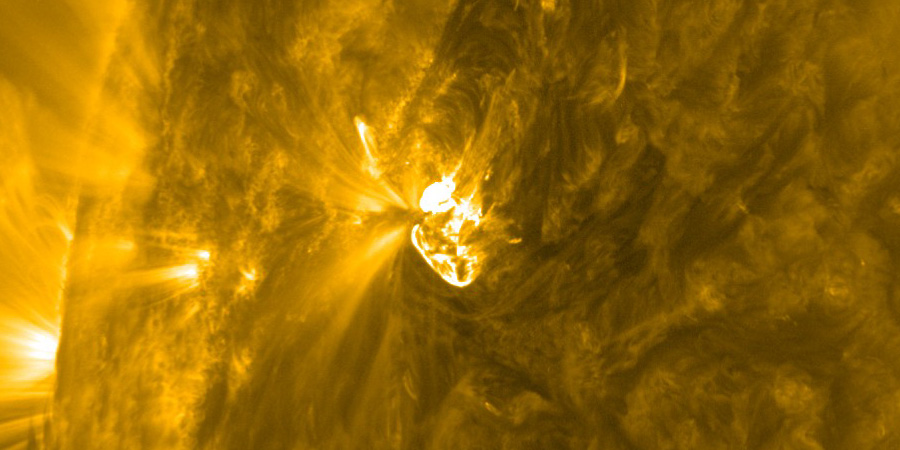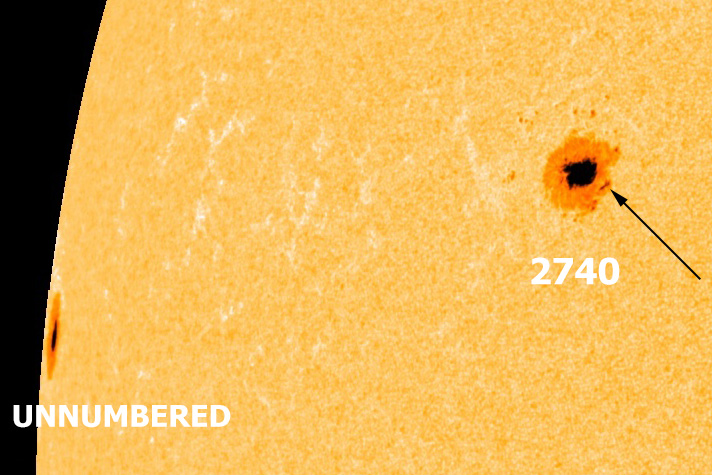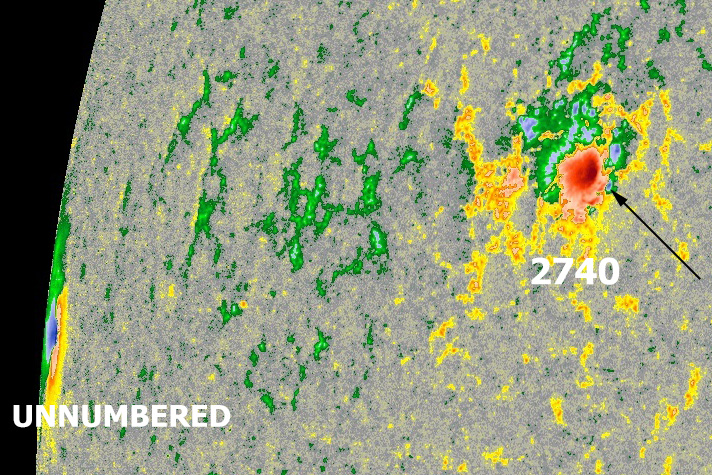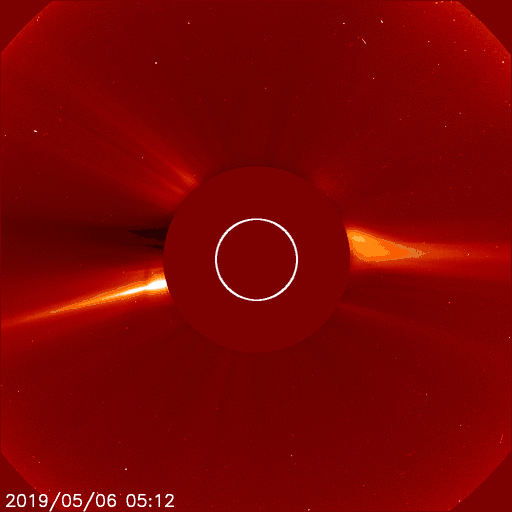Sunspot region 2740, C9.9 solar flare
Monday, 6 May 2019 17:08 UTC

Almost an M-class solar flare! Sunspot region 2740 (Beta-Delta) produced a very impulsive C-class solar flare this morning at 05:10 UTC. The solar flare peaked at an X-ray flux of C9.97 which is just shy of the M-class threshold. The eruption was associated with an Type II Radio Emission and several more C-class solar flares occurred as the day progressed.
Why is this fairly unimpressive sunspot region popping with C-class solar flares here and there? Well, it's the magic that is magnetic reconnection at work. We get back to the C-class solar flares later but first lets look at sunspot region 2740 with the help of the images below. First we see sunspot region 2740 (and an unnumbered friend that is just rotating into view) in white light and a magnetogram of this region. The arrow indicates a magnetic delta structure and that magnetic delta structure is for a sunspot region what would be a bad fitting shoe to us. Something that gets you pretty damn upset and angry as your toes are all bunched up. Sort of. You get the point. But more specifically, a magnetic delta structure is the umbrae of opposite polarity in a single penumbra. Opposite magnetic fields so close by each other causes magnetic tension and reconnection (resulting in solar flares) and that is what we are seeing in sunspot region 2740. The solar flares have been fairly impulsive (short in duration) thus far and have not yet reached the M-class threshold but this region remains a threat you should keep your eyes on!

Image: SDO/HMI white light.

Image: SDO/HMI magnetogram.
C9.9 solar flare
This morning's C9.9 solar flare was just one of five C-class solar flares today with the C9.9 and a C7.3 solar flare being the two strongest events today thus far. None of these solar flares produced a coronal mass ejection (a cloud of solar plasma) into space with an earth-directed component but there are a couple of very minor coronal mass ejections to be seen both on the coronagraph images from STEREO Ahead and SOHO. All of these plasma clouds are very minor but it is a sign of potential that it can release plasma into space despite the fairly minor strength of these flares compared with M or even X-class solar flares. Another reason to keep your eyes on this sunspot region as in just two to three days from now this region will face earth head-on.

Animation: coronal mass ejections seen today on SOHO LASCO C2.
Thank you for reading this article! Did you have any trouble with the technical terms used in this article? Our help section is the place to be where you can find in-depth articles, a FAQ and a list with common abbreviations. Still puzzled? Just post on our forum where we will help you the best we can!
Latest news
Latest forum messages
More topicsSupport SpaceWeatherLive.com!
A lot of people come to SpaceWeatherLive to follow the Sun's activity or if there is aurora to be seen, but with more traffic comes higher server costs. Consider a donation if you enjoy SpaceWeatherLive so we can keep the website online!

Space weather facts
| Last X-flare | 2025/03/28 | X1.1 |
| Last M-flare | 2025/04/01 | M2.4 |
| Last geomagnetic storm | 2025/03/27 | Kp5 (G1) |
| Spotless days | |
|---|---|
| Last spotless day | 2022/06/08 |
| Monthly mean Sunspot Number | |
|---|---|
| February 2025 | 154.6 +17.6 |
| April 2025 | 147 -7.6 |
| Last 30 days | 128.8 -21.8 |


